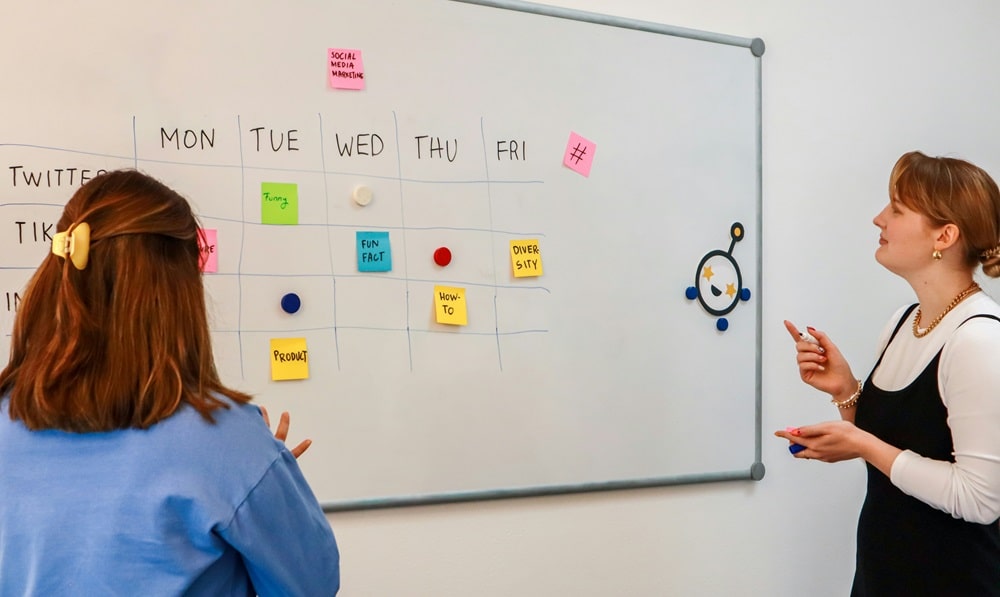What is the importance of shared calendars ?
In a constantly evolving professional world, effective team management has become a strategic priority for every organization.
Coordinating tasks, meeting deadlines, and ensuring smooth communication are daily challenges companies must address. In this context, shared calendars have become essential tools for ensuring optimal organization and meeting the demands of modern teams.

Understanding shared calendars
A shared calendar is a collaborative tool that allows multiple team members to access a common schedule.
It can include information such as working hours, deadlines, meetings, and assigned tasks. Unlike traditional calendars, shared agendas are often digital and accessible in real time, making them a major asset for modern teams working remotely or spread across different locations.
Why are shared calendars necessary ?
In today’s professional environment, where teams are often multi-project and sometimes international, shared calendars provide an overview of priorities and availabilities. They reduce the risk of misunderstandings and facilitate communication.

Key benefits of shared calendars
Improved coordination
Shared calendars allow each team member to understand their own priorities while also visualizing those of others. This enhances coordination, especially in complex projects requiring interdependence between multiple stakeholders.
For example, in a software development project, developers, testers, and project managers can use a shared calendar to track development, testing, and production phases. The calendar also helps keep track of client meetings and project progress. Acollab is an ideal collaborative planning tool for effective team coordination !
Increased transparency
A shared calendar promotes transparency by providing a global view of team activities. Every member can easily see who is responsible for what, along with associated deadlines. Each person can also create their own schedule, allowing colleagues to access their availability.

Time savings
With a centralized schedule, teams avoid endless email threads and unnecessary meetings to clarify responsibilities and deadlines. Everything is available and updated in real time.
Reduced stress
A clear, shared schedule helps reduce stress by removing ambiguity. Teams know exactly what is expected and can plan their time more effectively.
Flexibility and adaptability
Shared calendars allow for quick adjustments when priorities shift or unexpected changes occur. This flexibility is essential for modern teams operating in agile environments.
The most popular shared calendar tools
Easy to use and widely adopted, Google Calendar is a popular choice for teams that want to share events. Its integration with other Google Workspace tools makes it especially convenient.

Acollab is widely used by small teams looking to streamline their coordination. It allows you to create calendars by project or by team, while also providing an overview of all schedules.
Acollab helps you save time and stay organized day-to-day thanks to its simple and user-friendly interface.
Asana is designed for project-focused teams. It offers shared planning features with advanced capabilities like dependency tracking and resource management.
In addition to its communication features, Microsoft Teams includes shared scheduling tools through integrations with Planner or Outlook.

Best practices for effective use
Set clear rules
To avoid confusion, it’s important to define rules for using the shared calendar : who can edit events, what type of information should be included, and so on.
Train the team
Every team member should be trained on how to use the chosen tool to ensure optimal adoption.
For Acollab, the team is easily reachable to schedule a demo session! In most cases, one demo is enough to get started with the tool.
Keep it updated
An outdated calendar quickly becomes useless. Managers must ensure all information is kept up to date.

Enable notifications
Automatic reminders and alerts help ensure that no important events are forgotten.
Don't overload the calendar
An overly detailed schedule can become confusing. It’s best to focus on essential information. Remember, you can also create multiple calendars based on different needs to keep things readable.
The impact of shared calendars on team culture
Encourage accountability
By allowing team members to visualize tasks and deadlines, shared calendars foster a greater sense of individual responsibility.
Strengthen collaboration
Shared calendars act as a central coordination hub, boosting collaboration across the team.

Promote a culture of transparency
When everyone has access to the same information, it nurtures a culture of openness and trust.
Real-life use cases : shared calendars in action
Project management
In a communications agency, a shared calendar can help coordinate creative, technical, and sales teams to ensure on-time project delivery.
In a construction-focused business, a collaborative calendar can help manage and monitor different job sites and track which tradesperson is assigned to which location.
Event planning
Shared calendars provide a quick overview of the agency’s scheduled events and their progress status.
Remote team coordination
For companies working across time zones or remotely, a shared calendar is a must-have for managing meetings, deadlines, and tasks without scheduling conflicts.
Challenges of shared calendars
Resistance to change
Some teams may be hesitant to adopt new tools. To overcome this, it’s essential to clearly demonstrate the benefits and provide appropriate training.

Information overload
An overloaded schedule can be counterproductive. It’s important to simplify and structure the information to avoid confusion.
Access management
It’s vital to set different access levels to prevent unauthorized changes or errors. For example, only project managers should be allowed to edit key tasks, while team members can add comments or mark progress.
